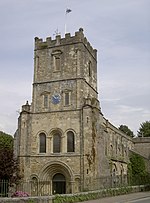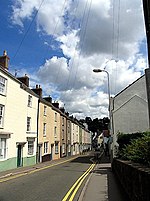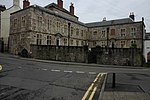Chepstow Railway Bridge
1852 establishments in the United KingdomBridges across the River WyeBridges by Isambard Kingdom BrunelBridges completed in 1852Brunel truss bridges ... and 8 more
ChepstowGrade II listed bridgesGrade II listed bridges in WalesRailway bridges in GloucestershireRailway bridges in MonmouthshireTidenhamTied arch bridgesUse British English from February 2023

Chepstow Railway Bridge was built to the instructions of Isambard Kingdom Brunel in 1852. The "Great Tubular Bridge" over the River Wye at Chepstow, which at that point forms the boundary between Wales and England, is considered one of Brunel's major achievements, despite its appearance. It was economical in its use of materials, and would prove to be the design prototype for Brunel's Royal Albert Bridge at Saltash. Although the superstructure has since been replaced, Brunel's tubular iron supports are still in place. It is a Grade II listed structure.
Excerpt from the Wikipedia article Chepstow Railway Bridge (License: CC BY-SA 3.0, Authors, Images).Chepstow Railway Bridge
A48,
Geographical coordinates (GPS) Address External links Nearby Places Show on map
Geographical coordinates (GPS)
| Latitude | Longitude |
|---|---|
| N 51.643638888889 ° | E -2.6669444444444 ° |
Address
A48
NP16 5FH , Chepstow
Wales, United Kingdom
Open on Google Maps









